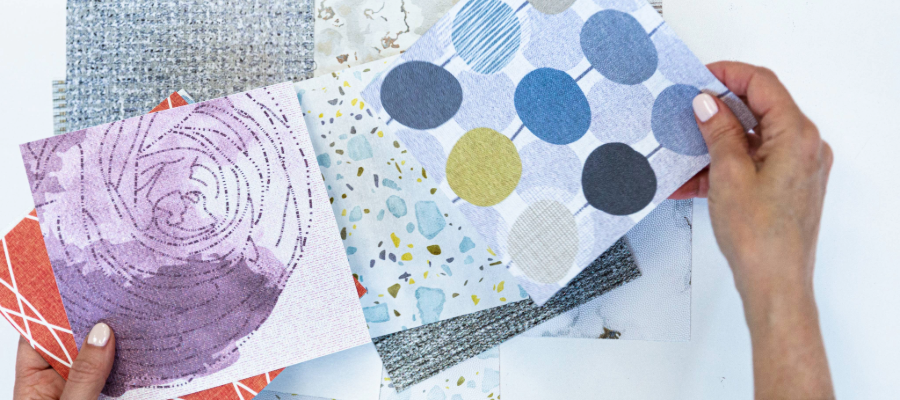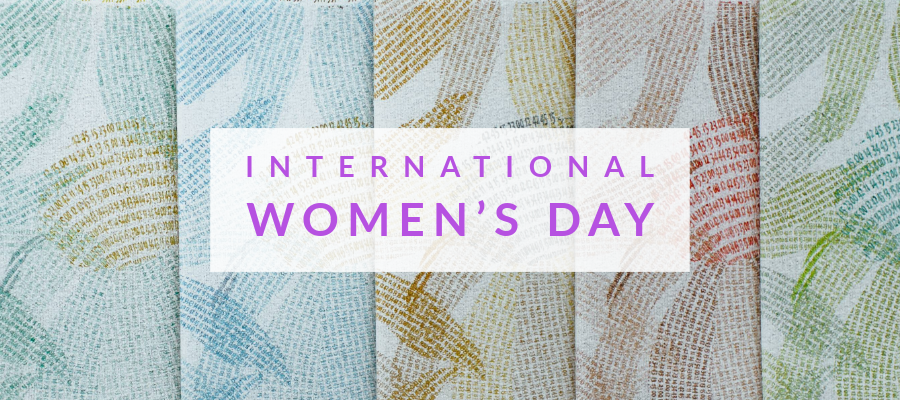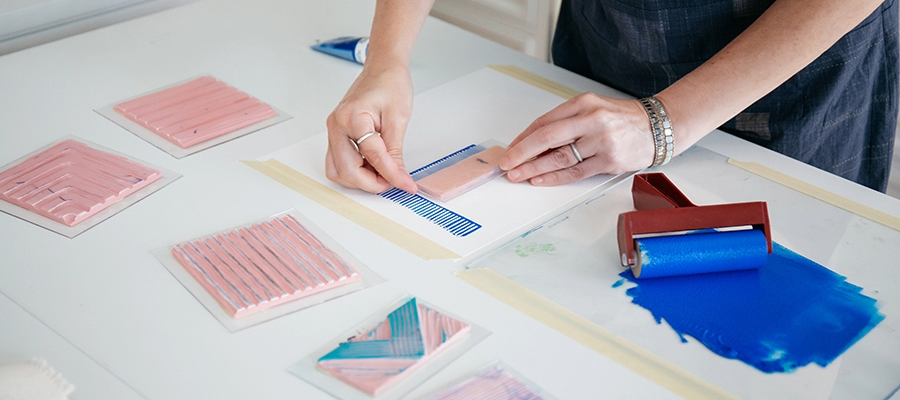
Luise Stromberg’s Plain Weave Challenge
“I have to find a light somewhere,” thought Luise Stromberg as spring turned to summer in 2020. Like most of us, Luise was spending most of her time home and was searching for a creative spark to get her through the dark time we were all experiencing. So, she turned to a passion of hers, textiles, and started a quarantine project she named the Plain Weave Challenge.
Throughout her 30+ year career in commercial textiles, she moved further away from looms and focused more on people and management. She felt disconnected from the materials and processes she loved about textiles. In a time of uncertainty, she wanted to feel the joy again of making something with her hands.
For Luise, the plain weave challenge is about experimenting with materials. Her goal is inspiration and material experimentation and not creating functional textiles or end products. “It’s all about the process and the journey.”
How did she begin the project?
With shopping more difficult due to the pandemic, Luise wondered what she could make with what she had around her. She looked around her space and saw she had unused Bristol Board and used it to make a small loom, about 2.5” square. An avid knitter, Luise had lots of yarn, much of which was small bits leftover from previous projects. With the loom made, she chose a yarn, warped her little loom, and started weaving.
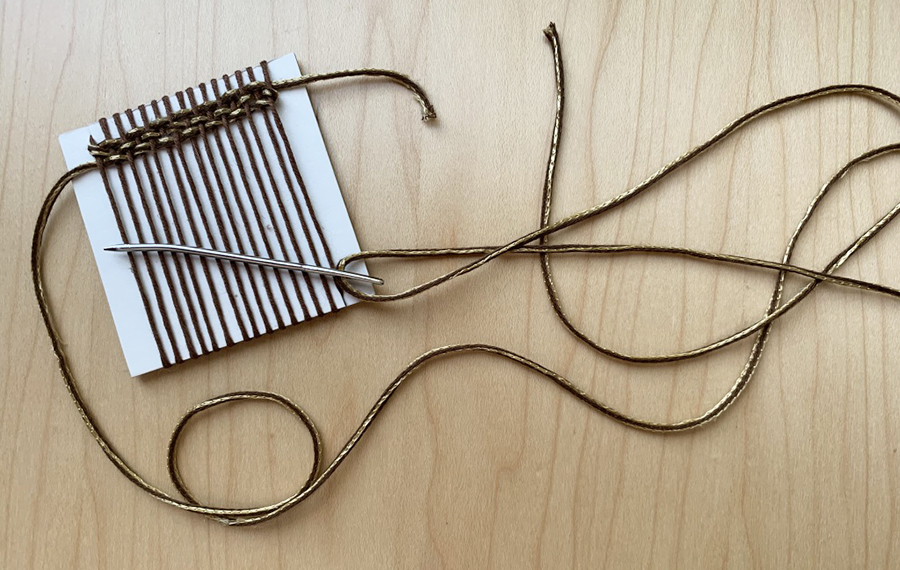
Plain weave is the simplest structure for a weaver. Most people learn how to do it at some point in their life. With your warp threads under tension on the loom, a weaver takes a weft thread and goes over one warp thread, under the next warp thread. Over, under, that’s plain weave. Each piece Luise creates takes anywhere from ten to sixty minutes to make. One of the bonuses? The routine also forces her to take a break and create for an uninterrupted period of time.

What’s so interesting about plain weave?
Plain weave may be a simple structure, but that doesn’t mean it’s boring. Luise thinks about the five key elements that make up woven fabric construction when starting a new weaving. Density, scale, texture, rhythm, and color. By only weaving with plain weave, she can create fabrics that explain and highlight these elements. For example, she may spend a whole week creating pieces focused on density. In these pieces, she may do a series of weavings with all the same yarns; the only difference is the density of the warp threads, the weft threads, or both. Through examples such as these, even non-weavers can see how a change in density can change the properties and look of a fabric.
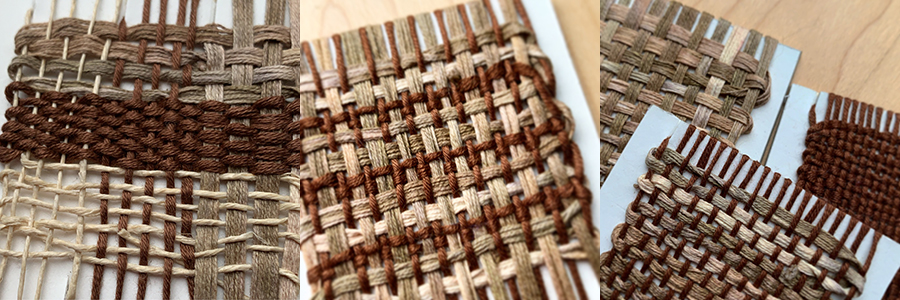
During Luise’s career in the textile industry, she worked with woven structures much more complex than plain weave. She created complex designs woven on jacquard looms in industrial mills. She wondered, would she get bored with just the simple over and under of plain weave?
The answer? Not yet!
Luise assumed her plain weave challenge would last a couple of weeks. She thought, maybe after about ten weavings, she’d be ready to move onto something more complex. Well, six months and over 100 samples later, Luise has no plans for stopping. By rediscovering the joy of simplicity, she’s found new ways for it to be complex. And she’s still passionate about plain weave.
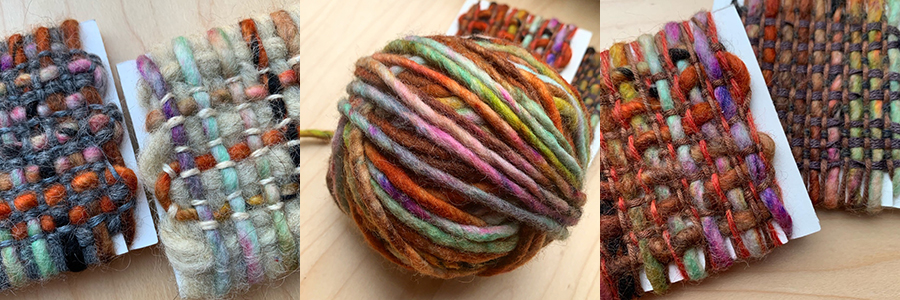
Where does the plain weave challenge go from here?
The plain weave challenge began as a project just for herself. It was always about inspiration and experimentation. As Luise created, though, she started to share images of her weavings on Instagram. Hearing reactions, especially from non-weavers, she was reminded of her work teaching interior designers about textiles. In her experience, interior designers work so closely with fabrics and are eager to learn about their construction. With her small weavings, people can look at fabric and see what she sees as a textile person.
She loves to get people interested and excited about fabric. She hopes the simplicity of her loom and her weavings will inspire others to experiment and play. Creating without an end product has helped Luise find her way back to her roots. The plain weave challenge has been an important reminder to feed creative outlets and allow space to just start making.
Thank you so much to Luise for sharing her plain weave challenge. If you’d like to see more images of her weavings, follow Luise on Instagram or search #PlainWeaveChallenge.

Share this post
Author
DESIGN/COLOR TRENDS AND AWESOME INFORMATION IN YOUR INBOX
Sign up for our monthly trend letter





